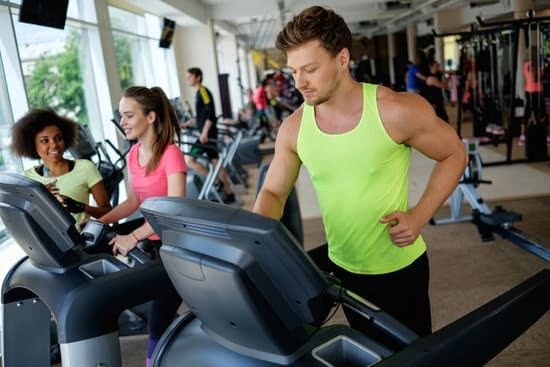Why fitness is the major goal of physical education? Physical education plays a crucial role in promoting overall fitness and health among students. It aims to instill lifelong habits of physical activity and educate individuals about the importance of maintaining a healthy lifestyle. This article will explore the history of physical education, the impact of physical education on students’ well-being, the benefits of incorporating fitness into physical education, and strategies for implementing a comprehensive fitness curriculum.
Physical education has evolved over time, with an increasing focus on promoting fitness as a major goal. Historically, physical education was primarily aimed at military training and developing athletic skills. However, as society’s understanding of health and wellness has evolved, so too has the purpose of physical education.
In today’s schools, physical education encompasses more than just sports and games; it serves as a tool for promoting holistic well-being. By integrating fitness into physical education curriculum, educators are able to equip students with essential skills for maintaining their health throughout their lives. The following sections will delve deeper into the history, role, benefits, and challenges of incorporating fitness into physical education programs.
The History of Physical Education
Physical education has a rich history that dates back to ancient civilizations, where physical fitness and strength were highly valued. The Greeks, for example, believed in the concept of a sound mind in a sound body, and their educational system included physical training as an essential component.
Similarly, ancient Chinese societies placed great emphasis on physical activities such as martial arts and gymnastics as part of their education system. This historical background highlights the importance placed on physical fitness and its integral role in education throughout various cultures and time periods.
As physical education evolved over the centuries, it became more formalized within school systems, with a focus on promoting overall health and wellness among students. It was during the 19th century that organized physical education programs began to emerge in schools across Europe and North America. This shift towards structured physical education marked a significant turning point in emphasizing fitness as a major goal of the curriculum.
One of the key influences on the central focus of fitness in physical education was the recognition of its positive impact on individuals’ health. As scientific research began to highlight the benefits of regular exercise on cardiovascular health, strength, and mental well-being, educators increasingly incorporated fitness into their curriculums.
This shift reflected a broader understanding of the importance of maintaining an active lifestyle from an early age, which has only grown more critical in light of rising rates of sedentary behavior among children and adolescents.
- Ancient Greek emphasis on “sound mind in a sound body”
- Emergence of formalized physical education programs
- Positive impact of exercise highlighted by scientific research
Ultimately, understanding this historical progression underscores why fitness is now widely recognized as the major goal of physical education. By tracing its roots through different cultural and educational contexts, we can appreciate the enduring significance of integrating fitness into students’ learning experiences. As we delve deeper into this history, it becomes evident that teaching students about the value of fitness has always been at the core of physical education’s purpose.
The Role of Physical Education in Schools
Physical education plays a crucial role in schools by promoting the overall well-being of students, including their physical, mental, and emotional health. By providing structured opportunities for physical activity and fitness, physical education helps students develop healthy habits that can last a lifetime. Here are some key ways in which physical education positively impacts students’ well-being:
- Physical Health: Through regular participation in physical education classes, students can improve their cardiovascular fitness, muscular strength, and flexibility. This can lead to a reduced risk of chronic diseases such as obesity, diabetes, and heart disease.
- Mental Health: Engaging in physical activity has been shown to have a positive impact on mental health by reducing stress and anxiety, improving mood, and boosting self-esteem. Physical education provides an outlet for students to release pent-up energy and tension, leading to improved mental well-being.
- Emotional Well-Being: Physical education also helps students develop important social skills such as teamwork, communication, and leadership. Engaging in sports and group activities within the physical education curriculum can foster positive relationships with peers and promote a sense of belonging and connectedness.
It is clear why fitness is the major goal of physical education – because an emphasis on fitness directly contributes to students’ overall well-being. By prioritizing fitness in physical education programs, schools can support the holistic development of their students.
Incorporating fitness into physical education not only benefits students during their time in school but also equips them with essential lifelong skills that they can carry into adulthood. By instilling the value of fitness at a young age, physical education helps set the foundation for a lifetime of healthy habits.
Ultimately, the impact of physical education on students’ well-being extends beyond the classroom. It sets them up for success both academically and personally, laying the groundwork for a healthier, happier future. Therefore, it is vital that schools continue to prioritize fitness as a major goal of their physical education programs.
The Benefits of Fitness in Physical Education
Physical education plays a crucial role in promoting overall fitness and health among students. In today’s modern society, where sedentary lifestyles and unhealthy eating habits are prevalent, the importance of physical education cannot be emphasized enough. By incorporating fitness into physical education, students can experience a wide array of benefits that positively impact their physical, mental, and emotional well-being.
Improved Cardiovascular Health
One of the primary benefits of integrating fitness into physical education is the improvement in cardiovascular health. Regular physical activity, such as running, swimming, or playing sports, helps to strengthen the heart and improve circulation. By engaging in aerobic exercises during physical education classes, students can reduce their risk of developing cardiovascular diseases later in life.
Enhanced Strength and Endurance
Incorporating fitness activities like weightlifting, resistance training, and circuit workouts into physical education can help students build strength and endurance. These activities not only promote muscular development but also increase overall stamina and resilience. As a result, students are better equipped to handle physical challenges and demands in everyday life.
Overall Well-Being
Aside from the physical benefits, incorporating fitness into physical education also contributes to overall well-being. Regular exercise has been linked to improved mood, reduced stress levels, and enhanced mental clarity. By instilling healthy habits early on through fitness-focused physical education classes, students can carry these skills with them throughout their lives.
These numerous benefits are why fitness is the major goal of physical education. By prioritizing fitness within the curriculum, educators can help students develop lifelong habits that contribute to their long-term health and wellness.
Fitness as a Lifelong Skill
Physical education plays a crucial role in teaching students the value of fitness as a lifelong skill and habit. By emphasizing the importance of staying physically active, educators can instill in students the understanding that fitness is not just a short-term goal, but an essential element of overall well-being.
This section will delve into the reasons behind why fitness is the major goal of physical education, focusing on how it prepares students to lead healthy and active lives long after they graduate.
One of the main reasons why fitness is the major goal of physical education is that it equips students with the knowledge and skills they need to maintain a healthy lifestyle. By introducing them to different forms of exercise, teaching them proper techniques, and educating them about the benefits of physical activity, educators are laying the foundation for a lifetime of fitness.
This emphasis on lifelong skill-building ensures that students are better equipped to take care of their physical health even outside of the school setting.
Additionally, teaching fitness as a lifelong skill helps instill discipline and commitment in students from a young age. By setting goals, following through with regular exercise routines, and experiencing improvements in their physical abilities over time, students learn valuable life lessons about perseverance and dedication. These attributes carry over into other areas of their lives, contributing to their overall personal development. This holistic approach to education underscores why fitness remains at the forefront of physical education curriculum across schools nationwide.
The Connection Between Fitness and Academic Performance
Physical education plays a significant role in promoting overall fitness and health among students. One of the major goals of physical education is to highlight the connection between fitness and academic performance. Research has shown that there is a strong correlation between physical fitness and academic success. This section will explore various studies and findings that support this relationship.
A study published in the Journal of School Health found that students who participated in regular physical activity and had higher levels of physical fitness also showed better academic performance. The researchers noted that physical activity not only improved physical health but also cognitive function, which ultimately translated into better academic outcomes for the students.
Furthermore, a report from the Centers for Disease Control and Prevention (CDC) highlighted the positive impact of physical activity on brain function. The report emphasized that regular exercise can enhance memory, attention, and decision-making skills, all of which are essential for academic success. This demonstrates why fitness is the major goal of physical education, as it not only improves students’ physical well-being but also enhances their cognitive abilities.
In addition to these findings, a study conducted by the University of Illinois at Urbana-Champaign revealed that higher levels of cardiovascular fitness were associated with better math and reading test scores among elementary school students. These compelling research findings underscore the importance of integrating fitness into physical education curriculums to support students’ overall academic achievement.
| Research Findings | Supporting Evidence |
|---|---|
| Regular physical activity linked to higher academic performance | Journal of School Health study |
| Positive impact of exercise on brain function | CDC report |
| Cardiovascular fitness associated with better math and reading scores | University of Illinois at Urbana-Champaign study |
Overcoming Barriers to Fitness in Physical Education
Implementing a comprehensive fitness curriculum in physical education programs can be challenging due to various barriers and obstacles that educators may encounter. One common barrier is the limited time allocated for physical education classes, which may result in a focus on other aspects of the curriculum at the expense of fitness activities. Additionally, budget constraints and lack of resources can hinder the implementation of diverse fitness programs and equipment.
Another significant challenge is student engagement and motivation. Some students may lack interest in traditional fitness activities or feel intimidated by more physically demanding exercises, leading to disengagement from the program. Moreover, societal and cultural factors can also influence students’ attitudes towards fitness, making it difficult for educators to promote a positive and inclusive environment for physical activity.
To address these challenges, educators can implement creative strategies to overcome barriers to fitness in physical education. One approach is to collaborate with other school departments or community organizations to secure additional funding and resources for fitness programs. By leveraging external partnerships, schools can access a wider range of fitness opportunities and equipment, ultimately enhancing the quality of physical education experiences for students.
Furthermore, promoting an inclusive and diverse approach to fitness is essential in overcoming student engagement barriers. Educators should offer a variety of physical activities that cater to different interests and abilities, ensuring that all students feel empowered and motivated to participate. By celebrating individual progress and achievements, educators can foster a positive mindset towards fitness as a lifelong skill.
In summary, addressing the barriers to promoting fitness in physical education requires proactive measures such as securing resources through partnerships and embracing diversity in fitness activities. With these strategies in place, educators can effectively overcome obstacles and create an environment where fitness becomes a major goal of physical education.
| Barriers | Strategies |
|---|---|
| Limited time and resources | Collaborate with external partners for funding and equipment |
| Student disengagement | Offer diverse activities catering to different interests and abilities |
| Societal influence on attitudes towards fitness | Celebrate individual progress to promote a positive mindset towards lifelong fitness skills |
Implementing a Comprehensive Fitness Curriculum
Curriculum Development
When developing a comprehensive fitness curriculum for physical education, educators should consider the diverse needs and abilities of their students. It is important to create a curriculum that offers a variety of physical activities, such as cardiovascular exercises, strength training, flexibility exercises, and more. Additionally, incorporating elements of nutrition education can further enhance the fitness curriculum by teaching students the importance of a balanced diet in achieving overall fitness.
Utilizing Technology and Resources
In today’s digital age, educators have access to numerous resources and technologies that can aid in integrating fitness into their physical education programs. Utilizing fitness apps, online workout videos, and wearable fitness trackers can help engage students and make fitness more interactive and accessible. Additionally, schools can consider investing in equipment such as heart rate monitors and pedometers to provide students with tangible tools for tracking their fitness progress.
Collaboration With Community Partners
Educators can also enhance their fitness curriculum by collaborating with community partners such as local gyms, sports organizations, or health professionals. These partnerships can offer opportunities for guest speakers, field trips to fitness facilities, or even mentorship programs that expose students to various aspects of the fitness industry. By connecting with external resources, educators can provide students with real-world experiences that reinforce the value of physical fitness as a lifelong pursuit.
By incorporating these practical tips and suggestions into their physical education programs, educators can effectively integrate fitness into their curriculum and emphasize why fitness is the major goal of physical education. Providing a well-rounded approach to promoting physical activity will not only benefit students’ current well-being but also instill lifelong habits that contribute to their long-term health.
Conclusion
In conclusion, physical education plays a crucial role in promoting overall fitness and health among students. By prioritizing fitness as the major goal of physical education, educators can instill lifelong habits and skills that contribute to students’ well-being both now and in the future. The history of physical education has evolved to focus on fitness as a central component, recognizing its profound impact on students’ physical, mental, and emotional health.
The benefits of incorporating fitness into physical education are extensive, ranging from improved cardiovascular health to increased strength and endurance. These physical benefits not only contribute to a healthier lifestyle but also have a positive effect on academic performance. Research has shown a clear correlation between physical fitness and academic success, highlighting why fitness is the major goal of physical education.
Despite challenges and obstacles in promoting fitness in physical education, it is essential for educators to implement a comprehensive fitness curriculum. By providing practical tips and suggestions for educators on how to effectively integrate fitness into their programs, schools can overcome these barriers and prioritize the long-term well-being of their students.
Ultimately, emphasizing the significance of fitness as the major goal of physical education is instrumental in equipping students with the necessary tools for a healthy and active lifestyle throughout their lives.
Frequently Asked Questions
Why Is Fitness Important in Physical Education?
Fitness is important in physical education because it contributes to overall health and wellness. By engaging in regular physical activity, students can develop strength, endurance, flexibility, and coordination. It also helps in the prevention of chronic diseases and encourages healthy habits.
Why Fitness Is the Main Goal of Physical Fitness?
Fitness is the main goal of physical education because it promotes an active lifestyle and teaches students the importance of staying physically fit. Through various activities and exercises, students can improve their cardiovascular health, muscular strength, and flexibility, leading to a better quality of life.
What Is the Major Goal in Physical Education?
The major goal in physical education is to promote physical fitness and overall well-being among students. This includes teaching them essential skills for participating in various sports or activities, as well as helping them develop positive attitudes towards exercise and healthy living. Ultimately, the goal is to instill lifelong habits that prioritize physical health.

Passionate about providing useful information to anyone with an interest in the field of Personal Training, I strive to pass on to our readers quality information and to answer any questions about Personal Trainers, the work they do and how to become one.





